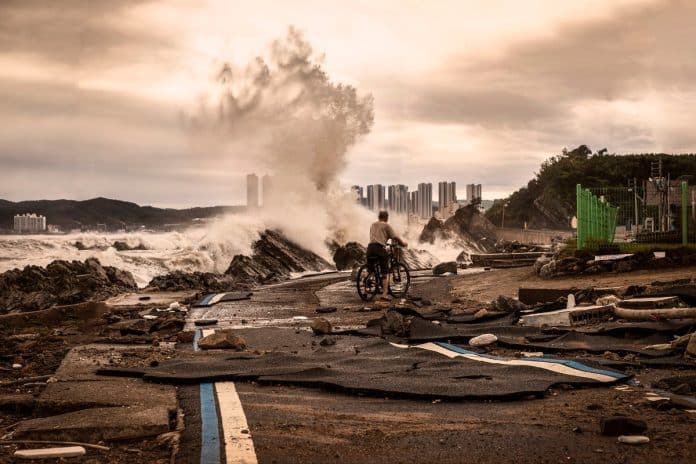The World Meteorological Organization (WMO) “is sounding a Red Alert worldwide”. The new annual report on the state of the global climate, published on 19 March, confirms once again: 2023 was the hottest ever recorded for 174 years (the era when weather records began).
The Earth’s average surface temperature has risen to 1.45° Celsius above the pre-industrial levels of 1850-1900. “Never have we been so close – albeit temporarily at the moment – to the 1.5° C lower limit of the Paris Agreement on climate change,” said WMO Secretary-General Celeste Saulo.
Ice melting, rising ocean temperatures
Records were again broken, and in some cases “smashed,” for greenhouse gas levels, surface temperatures, ocean heat and acidification, sea level rise, Antarctic Sea ice cover, and glacier retreat. The report emphasises that “warming is expected to continue—a change which is irreversible on scales of hundreds to thousands of years.”
Sea levels rose more than twice as fast from 2014 to 2023 than during the decade 1993 to 2002. In February 2023, the area covered by Antarctic ice was the lowest ever recorded since the beginning of satellite observations in 1979, with 1 million square kilometres less than the previous record, equivalent to the size of France and Germany combined. Glacier melt has been unprecedented since 1950. In Switzerland, glaciers have lost 10% of their remaining volume over the last two years.
Increase in climate disasters.
Heatwaves, floods, droughts, fires, and tropical cyclones are extreme events that hinder development. Between 2019 and 2023, the number of people suffering from food insecurity in 78 countries monitored by the World Food Programme (WFP) more than doubled, from 149 million to 333 million.
For example, the tropical cyclone Mocha in May 2023 was among the most intense ever observed in the Bay of Bengal. It forced 1.7 million people to relocate to the sub-region. Similarly, Hurricane Otis intensified very rapidly, hitting Acapulco in Mexico on 24 October 2023, where at least 47 people were killed. In Canada, wildfires saw 14.9 million hectares go up in smoke, more than seven times the long-term average. The deadliest fire occurred in Hawaii, with at least 100 deaths and damages estimated at 5.6 billion dollars.
A glimmer of hope: renewable energies
The only good news is that the transition to renewable energies brings a “glimmer of hope,” according to the WMO. The added production capacities in 2023 have increased by almost 50% compared to 2022. The challenge is to see nationally determined contributions come into effect in a context where greenhouse gas emissions continue to rise. A new climate action campaign will be launched on 21 March by the WMO and the United Nations Development Programme, given the Copenhagen ministerial meeting on climate on 21 and 22 March.
Six times more investments are needed
In 2021-22, global climate-related financial flows nearly doubled compared to 2019-20 but still represent only 1% of the global GDP, according to the Climate Policy Initiative non-profit, cited by the WMO.
These financial flows amount to 1.3 trillion dollars—equivalent to the GDP of Indonesia and about half of France’s GDP for comparison. Yet, investments need to be multiplied by six and reach 9 trillion dollars by 2030 (in other words, three times the current GDP of the United Kingdom) to stay within the 1.5° Celsius target set by the Paris Agreement.
Because “the cost of inaction is higher than that of climate action,” warns the WMO. Over the period 2025-2100, if nothing is done to stay within the Paris Agreement target, the total cost of inaction will amount to USD 1,266 trillion — more than 12 times the current annual global GDP. A figure that remains “dramatically underestimated,” the WMO notes.

